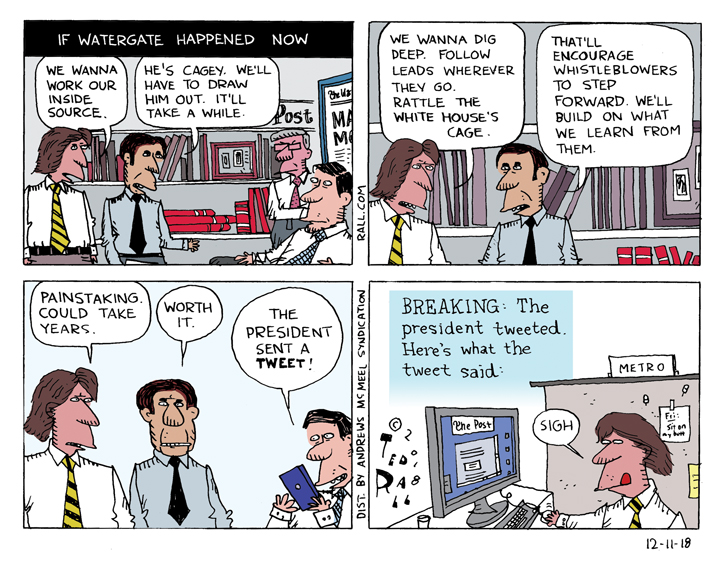/cdn.vox-cdn.com/uploads/chorus_image/image/65080120/shutterstock_1281388108.0.jpg)
Dear Mr. President,
Won’t you please kill the homeless woman who lives on a bench on the median strip of the street near my apartment building?
She doesn’t bother me. As far as I know, she doesn’t bother anyone else either. The woman who lives in the middle of the street is nice. I like her. Last week, as I was waiting for the traffic signal to change, she beckoned softly from under her pile of soiled blankets, asking for change, and I gave her a ten-dollar bill. I’m not usually that nice. She’s that sympathetic.
I pitied her. I’ve watched her decline since spring. As six months dragged by this probably-fiftysomething-year-old woman has deteriorated from “how did someone so normal become homeless?” to talking to herself to severely sunburned to “this person will die this winter.”
It was in the high 30s last night and it will only get colder and it is not a question of when or how she’ll die—the answers are (a) this winter and (b) hypothermia—but whether the usual circle of votive candles and $5 bouquets of flowers will be placed by her bench or on the southwest corner of the intersection near the other one.
They say that dying of cold isn’t that bad. That you feel warm, cozy, disoriented.
I don’t believe them. Whatever the physical sensations, dying from cold a hundred feet from a couple hundred housing units so overheated that many New Yorkers keep their windows open all year long has got to be one hell of a lonesome suck of depressing. The nice woman who lives in the median deserves better than drawing her final breath while staring at the glow of a laptop screen through a frosted window pane the opposite side of which, under different circumstances, she would live inside.
So, Mr. President, won’t you please kill this lady? You’d be doing her a favor.
I know this isn’t your fault, sir. In a different world, you could allocate the tens of thousands of dollars needed to provide my outside neighbor with emergency shelter, transitional housing, permanent rehousing, substance abuse and/or mental health treatment. In reality, that money is tied up. The government’s budget is stretched thin. You have a massive deficit to think about.
Plus you have big expenses. For example, you’re asking Congress for $106 billion “in funding for Israel, Ukraine, countering China in the Indo-Pacific, and operations on the southern U.S. border.” These are, obviously, all very important needs. Before she succumbed to schizophrenia, the woman who is going to die in my New York neighborhood wouldn’t dream of suggesting that her desire to live indoors ought to come ahead of countering China in the Indo-Pacific.
I understand. If she hadn’t gone crazy, she’d understand too. Defense is one pot. A big pot. Anti-poverty is another pot. A very small pot. Like the tiniest pot in the smallest dollhouse ever. Everyone knows—you can’t “just” move money from one pot to another pot. That’s not something we even want to think about.
All that military spending got me thinking, though. Although Ukraine and Israel and Taiwan clearly need fighter jets and tanks and drones and ships and cyber weapons and missiles and bombs and light arms and bullets in order to kill as many Russian and Palestinian and Chinese people as possible, will they really miss…one?
Euthanizing a homeless New Yorker wouldn’t require anything as fancy as one of the MGM-140 Army Tactical Missile Systems we’re sending to Ukraine. This lady isn’t worth $1.5 million. Not to mention, one ATACM would take out a whole block or two—including my place!
I’m thinking something more modest, along the lines of the Switchblade 300 “suicide” drone, another gizmo we’re providing to Ukraine. As I’m sure you’re aware, Mr. President, the AeroVironment Switchblade is an expandable loitering munition so small it can fit in a backpack. You launch it from a tube. Then it flies to and crashes into its target, where its explosive warhead detonates. Like the homeless, it’s expendable. And it’s only $6,000!
Come on, Mr. President: We both know the Ukrainians and the Israelis and Taiwanese don’t need all the weapons we’re sending them. The Ukrainians don’t; they’re selling the extras we send them on the black market and the dark web. I only need one. One!
I know—“operations on the southern U.S. border” address an existential threat to America. What if an illegal terrorist migrant were to sneak past the border wall and make his way to New York and then were to kill the homeless woman on my street who would otherwise die of exposure this winter? Of course, that would be OK.
Still. It’s not like you can’t let $6,000 “accidently” fall out of your budget for “operations on the southern U.S. border.” Send that drone. Please blow up the old lady.
(Ted Rall (Twitter: @tedrall), the political cartoonist, columnist and graphic novelist, co-hosts the left-vs-right DMZ America podcast with fellow cartoonist Scott Stantis. You can support Ted’s hard-hitting political cartoons and columns and see his work first by sponsoring his work on Patreon.)
Related: Biden Sends Billions Overseas As Americans Starve (Short Video)



